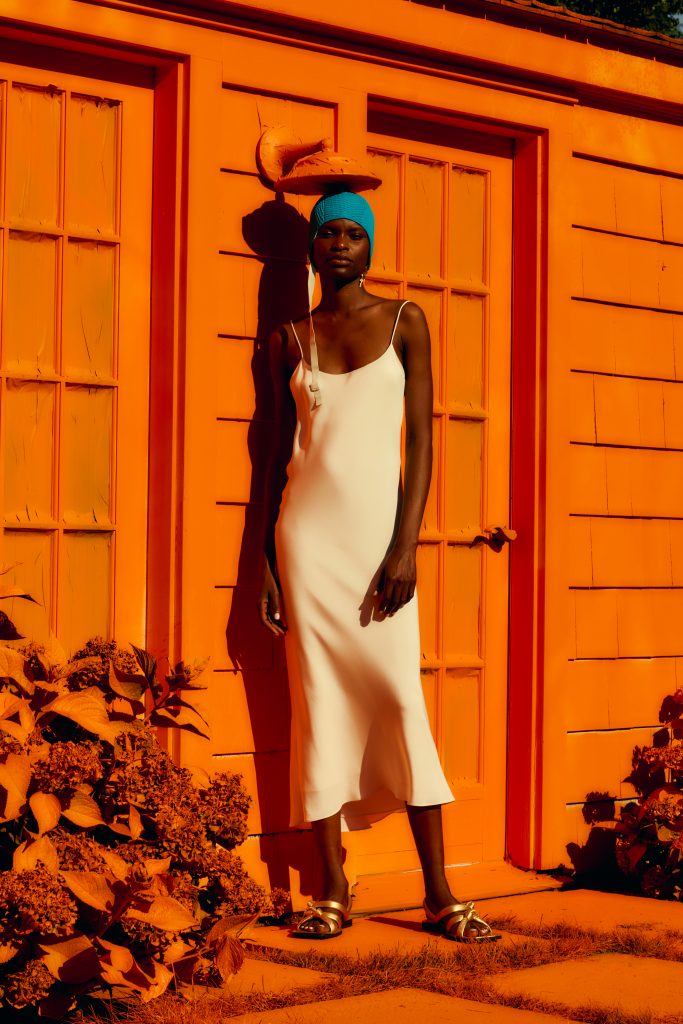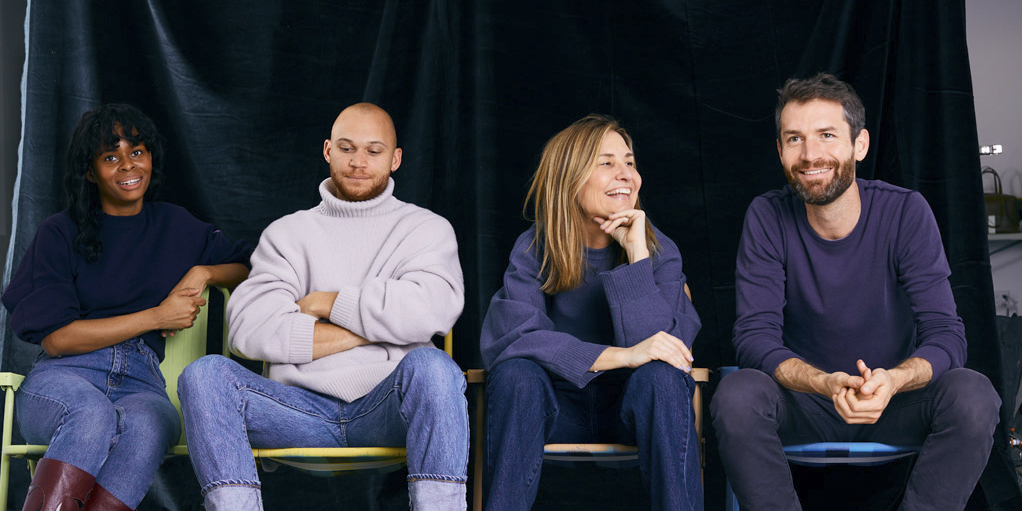Last weekend from April 8-10, I was fortunate enough to be a part of an outstanding collaboration with SCAD students and faculty and a team from Tibi that traveled from New York City to Savannah to bring their Fall 2021 collection to life. I worked as an assistant to Tibi’s photographer, Reed Young, and I was exposed to how a fashion campaign shoot runs outside of the classroom.
Looking at Reed’s website, it might not be immediately apparent that he photographs much fashion between the portrait photography and with publication credits including New York Times, National Geographic or TIME Magazine. However, after being on set, it was clear that Reed knows how to handle a camera and that his knowledge with it in his hand transcends any one genre.
After watching the team work together for a couple days, I had the chance to sit down with Reed and ask him a few questions that I thought other students in similar positions to me might want to know. Here’s what he had to say:
Did you attend an art and design school similar to SCAD?
So, I went to Brooks Institute of Photography in Santa Barbara, Calif., and graduated in 2005. After becoming a for-profit institution, tuition went up like crazy and the school closed. Still, while I was a student there, Brooks was a great school, and it was very technical.
What did you do right out of school?
When I finished Brooks, I wanted to assist photographers. But it was hard to get assisting jobs that I thought I would get a job in an art-buying department of an advertising agency and, beyond that and hire photographers. And so, I did that for nine months, and it didn’t last long. I was granted a fellowship with United Colors of Benetton (the Gap in Italy or Europe). They sponsor 25 artists a year to live in this place just north of Venice, Italy, and I just worked on my photography. It was a continuation of school for me.
What was the biggest thing you learned while there?
While there, I got a job with Fabrica, a local fashion magazine, which asked me to go around and essentially stop and photograph fashionable people in different towns in every corner of the country and ask them questions about their taste in fashion. After my first trip, I came back with the pictures, and my boss said, “OK, great that you did the assignment, but where’s your personal work from the trip?” and I didn’t have any. It didn’t even cross my mind.
For the next trip, he said that I had to come back with my work and come by his office later because he had something to give me. And, I got there, and on his desk was a fixed 50mm lens. He said that this was the only lens I was allowed to use for the rest of the time I shot for Fabrica, and if I used a wide lens or a telephoto lens, I was fired. He told me that I had to learn to move with my camera.
It was through the next assignment that I struggled to find what to photograph. And then I was like, well, what do I want to photograph? What’s interesting to me? And in these small towns, what was interesting was all the faces of these people who, you know, small town, Italy, it’s mostly older people during the daytime, you know? And so, there’s a bunch of older people, and they had great faces. As I started to speak with them, they began to invite me into their homes. Through that, I started to make portraits of people in their homes, and then I realized, OK, I’ve got to find a way to continue to do that.
I started to make my projects and just personal projects. I would go to a weird town and photograph an entire city that lives in one building in Alaska, or go to Tokyo and photograph retiring Sumo wrestlers or I just made up projects for myself. Nobody had commissioned them, but I knew what I wanted, and thought, if I do this, I’ll start getting hired to do that. And that’s how I got started as a photographer.

Tibi Spring 2021 Collection photographed by Reed Young
Who do you look to for inspiration in your work?
I look to the people I’m working with these days. I work with Byron [Fredericks] at Tibi, and he thinks and talks about ideas differently than I ever would think about when taking pictures. So, these days for me it’s less about seeing things in books and looking up old photographers who I love. I used to. When I was a student, I was obsessed with Irving Penn, Richard Avedon, David LaChapelle, and Steven Meisel, these big names.
What is something you would say to someone still in school who will be looking for work soon?
You have to be passionate about what you’re shooting. Like I know that that’s obvious, but what I’ve found is you have to be passionate enough to pay for it on your own and put your own time, your energy, and your own money down. You have to put everything into it.
Special thanks to Reed Young.
Photography courtesy of Reed Young and Tibi.
Interview by Patrick Cox.

